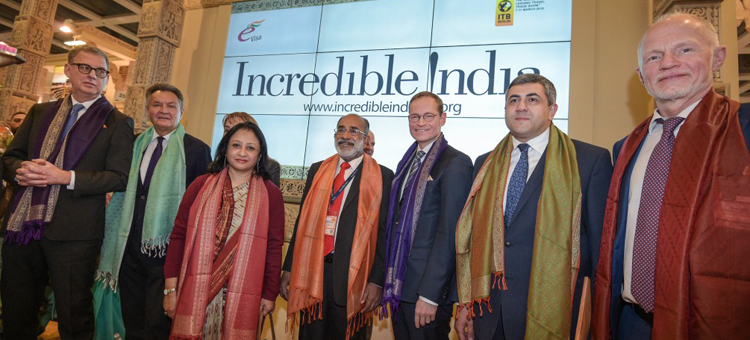Berlin: India made its presence felt at the 52nd ITB Berlin with the Indian delegation led by K J Alphons, Minister of State (I/C) for Tourism, Government of India, highlighting the country’s tremendous tourism potential. Alphons waxed eloquent about the country’s 5000-year-old civilisation, beautiful beaches, backwaters, desserts, coastline, Himalayas, and immense possibilities for millennials who are looking for adventure.
The minister also apprised the audience about the growing yoga and Ayurveda-related activities and centres in the country, exploring the North East and the great potential of religious tourism, with emphasis on Buddhist tourism.
“In terms of general numbers, India has done considerably well last year. 2017 was fantastic! We recorded 15.6 per cent, when the global numbers went up by 5 per cent. Our international tourist arrivals were 16.5 million last year. Are we happy with the numbers? No. We have so much to offer and we want to double the numbers in three years or less and double the revenues within three. India’s tourism contributes about 8 per cent to the GDP of India. We have 14 million people employed in the tourism industry,” Alphons said.
In terms of domestic tourism, close to 24 million Indians travelled last year. “In 2017, 1.8 million trips were made by Indians within the country and which will go up to 2 million in 2018 and we want this number to increase dramatically, it’s not just about international arrivals but also Indians visiting India,” he said.
The minister also stressed on the growing use of new technologies and methodologies in tourism, especially social media. Suman Billa, Joint Secretary, Ministry of Tourism, Government of India, stated that in terms of international tourist travels, India is growing and the travellers are spending more.
India’s share in world trade travel (2016) shows that the international tourist arrivals was 1.18 per cent while the international tourist receipts was 1.88 per cent. “When travellers visit India, they stay longer and spend more. The number of visitors we get is less but the amount of money we spend is disproportionately higher,” he added.





